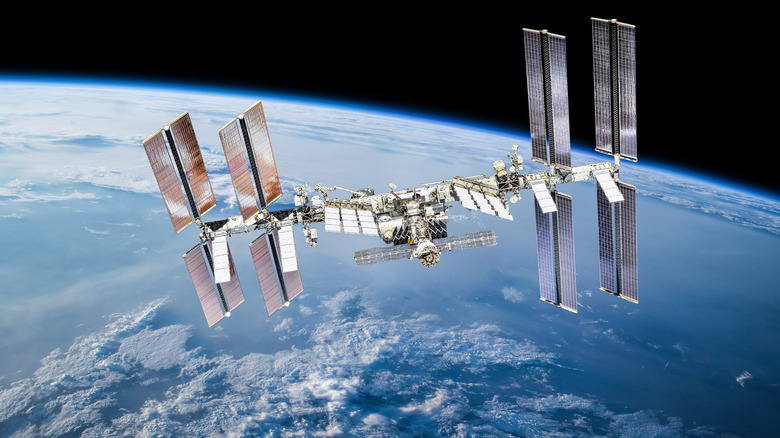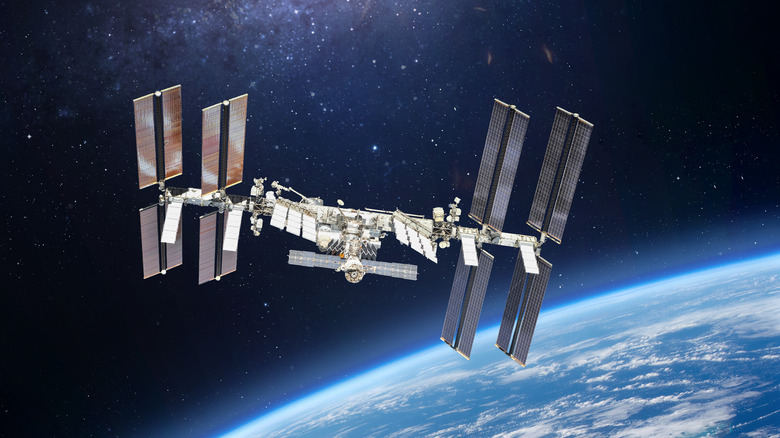What Happens After The International Space Station Is Retired?
The first pieces of the International Space Station, or ISS, were first launched into space in 1998, and the first crew of astronauts came on board in 2000, according to its own website. In the two and a half decades since it's been in orbit, 251 individuals from 19 countries have visited the craft (per NASA). The scientific missions carried out within its walls have added immeasurably to our understanding of climate change, the future of space exploration, and the nature of the universe itself.
At the end of the day, though, the ISS is a machine, and machines have finite life spans. The vessel is already showing signs of its advanced age, and due to those concerns — as well as the growth of privately-funded space exploration — NASA made the decision in 2022 to retire the ISS for good by 2031 (per NPR). And rather than allowing the empty vessel to become yet another piece of space junk, its managers intend to destroy it — an ignominious end to one of the crowning achievements of space exploration at the turn of the 20th/21st century.
It will be crashed into the Pacific Ocean
What goes up must come down, as the old saying goes, and that's true of what we launch into space as well. Everything we send up there — from a satellite the size of a small compact car to giant machines the size of the ISS — is eventually coming back, and the best that can be hoped for is that these things come back in a way that doesn't endanger people on the ground. Fortunately, approximately 71% of the surface of the Earth is ocean, according to the United States Geological Survey, meaning that even an uncontrolled reentry has a three in four chance of the craft winding up in the sea (if it doesn't burn up in the atmosphere first). And in the case of some satellites, their managers on the ground can direct them to a specific spot in the ocean where they're unlikely to cause any damage — Point Nemo, as it's called, the most remote part of the Pacific Ocean, furthest away from any inhabited landmass.
That's the plan for the ISS, reports NPR. Once the last astronauts have left, the mission control team intends to use the vessel's rockets to point it toward the middle of the Pacific Ocean and drive it safely into the water near Point Nemo. "It's the safest place to bring down a big spacecraft that's reached the end of its life," said space reporter Mike Wall.

